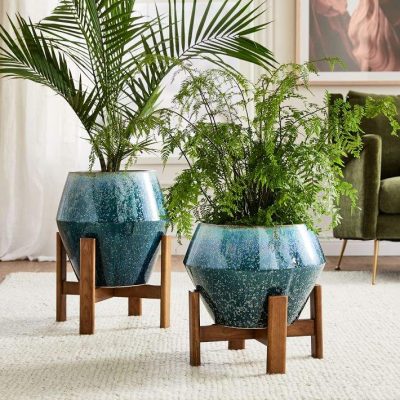There should be no shortage of rotten roots and yellow leaves in the cultivation of flowers and plants. In particular, flowers and plants with fleshy roots are most likely to have rotten roots during the maintenance process. Among them, succulent plants, such as Clivia are difficult to ensure that the roots do not have problems, because their fleshy roots are most afraid of being wet without watering. It is difficult to grasp the “degree” of watering more rotten roots, even for those who have been cultivating flowers for many years.
The bottom of the flowerpot is padded with foam, so that the flowers planted in this way will not rot roots or yellowing leaves
In fact, the root rot of Clivia and succulent plants is not only caused by watering, but also due to soil problems, because it is inevitable to water flowers and plants. If the soil is bad, no matter how careful you are, it will be useless. The root cause of flower rotting is that the soil cannot be drained after watering for a long time, and the soil is impermeable to moisture. Long term humid environment will lead to difficulty in breathing of the fleshy root system, which cannot carry out normal metabolism, and it starts to rot. We all know that plants cannot grow without water, but potted plants are not as good as those planted on the ground. Water needs to be drained quickly to protect the roots from decay. Therefore, the most important thing is to choose the appropriate soil environment for potted plants.
The bottom of the flowerpot is padded with foam, so that the flowers planted in this way will not rot roots or yellowing leaves
In order to increase the permeability and drainage of the soil, we can start from the structure of the soil, use special loose nutrient soil, mix some large particles, and increase the permeability of the soil. In this way, when watering, the soil will not have poor drainage, but also can maintain the root system. This is a common way to grow flowers, but it is necessary to add something to prevent rotting roots and yellowing leaves. This kind of thing is available in every household. It is a waste without money and is often thrown away by people. However, it is of great use. If you have something at home, you can leave a little, break it and put it on the bottom of the basin. It is breathable and ventilated. The key is very effective.
The bottom of the flowerpot is padded with foam, so that the flowers planted in this way will not rot roots or yellowing leaves
This kind of “garbage” is a foam box. When planting flowers, you can break it into thumb sized pieces and put them on the bottom of the basin. You can put some ceramsite and pebbles on the bottom. If it is a deep flowerpot, you can pad it thicker. If you don’t have ceramsite, you can use foam. After all, it costs nothing. You can use as much as you want, so you don’t need to buy it again. Then fill a proper amount of nutrient soil in the flowerpot, and use this soil to plant clivia and succulent plants. The yellow leaves will not rot, and the faster they grow, the better the root system will be, and the flowers and plants will be easy to grow. No matter how they are raised, there will be no problems, and the novice will not be afraid of it.
The bottom of the flowerpot is padded with foam, so that the flowers planted in this way will not rot roots or yellowing leaves
Use a flowerpot with foam at the bottom to pot the Clivia. It is not only ventilated and breathable, but also will not rot and increase weight. The maintenance is very simple. You should water it instead of paying attention to so many rules, because you don’t need to worry about water accumulation in the soil, and there will be no problem of rotting roots and yellow leaves. The Clivia grown in this way grows taller every year. The new pairs of leaves are shiny, firm and beautiful, and look really good, It won’t be long before we can draw a flower arrow.
The bottom of the flowerpot is padded with foam, so that the flowers planted in this way will not rot roots or yellowing leaves
How? Have you ever tried this method? Every household has a foam box, and it is enough to break off a piece of it. It is easy to water the fleshy root plants. If you need to water it, it doesn’t matter if you water it too much, because it will flow down by itself, and you don’t have to worry about rotting roots. Not only that, you can use it to breed flowers and plants, which is not only free but also effective.







